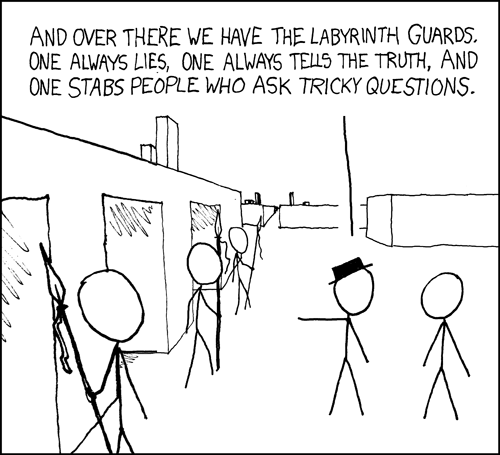And now we reach the last chapter in the book – Six Sensational Discoveries. This is another April Fool’s article that ran in the April 1975 issue of Scientific American, ostensibly as a recap of the top scientific discoveries that “escaped” the attention of the scientific community and the public at large. Martin comments in the addendum that although he’d thought he’d made it pretty obvious that these are all jokes, the editors received over 1,000 letters from people that took them seriously.

(All rights belong to their owners. Images used here for review purposes only. Exploding the four-color-map theorem.)
The first “discovery” by William McGregor is of a map that cannot be colored with fewer than 5 colors. (Some of Gardner’s readers succeeded in coloring the above map with 4 colors.)
The second discovery was in number theory, where e raised to the power of pi times sqrt(163) is an integer. Ramanujan had speculated that it would be, but most calculations by hand were too tedious and no one made it past twelve 9’s after the decimal. John Brillo supposedly applied Euler’s constant to prove the number is exactly 262,537,412,640,768,744. Actually, Ramanujan knew that this number is transcendental, and the next digit after 262,537,412,640,768,743.999999999999 is 2. The name Brillo is a play on John Brillhart.
In the computer sciences, Richard Pinkleaf designed a computer with the help of ex-world-chess champion Mikhail Botvinnik, designated MacHic because it plays like it’s intoxicated. MacHic is a learning machine, and is able to play 1 game against itself every 1.5 seconds. After 7 months of self-play, MacHic declared that pawn to king’s rook 4 is a win for White. Kissinger and Brezhnev were to meet to discuss the impact on world chess, and Bobby Fischer offered to play MacHic as long as it is silent during the game, and he’s guaranteed $25 million, win-or-lose. Gardner writes in the addendum that MacHic is a play on Richard Greenblatt’s MacHack.

(Special relativity – busted!)
For the physical sciences, Humbert Pringle discovered a fatal logical flaw in the special theory of relativity. In his thought experiment, a meter stick is flying through space at a speed so that it is Lorentz-contracted by a factor of 10. Simultaneously, we have a plate with a one-meter diameter hole, and the plate is traveling perpendicular to the stick, so that the two will intersect when the stick is centered in the hole. Both the stick and plate are idealized to have 0 thickness. If the plate is the inertial frame, the stick will be contracted to 10 centimeters and will easily pass through the hole. But, from the stick’s inertial reference frame, the plate’s hole will have a width of 10 cm, and the stick won’t be able to pass through. “The two situations aren’t equivalent, and thus a fundamental assumption in special relativity is violated.” For this one, Pringle is a play on relativity denier Herbert Dingle, and the solution is included in George Gamow’s Mr. Tompkins in Wonderland.

(da Vinci taking a break.)
Discovery five is of two of Leonardo da Vinci’s “lost” notebooks, which include a series of ball bearings surrounding a conical pivot similar to the Sperry Gyroscope invented in the 1920’s; a worm screw; a bicycle with a chain drive, and the first valve flush toilet. (The English patent for the valve flush toilet was granted to Alexander Cummings in 1775, but da Vinci had the idea first.) Really, the artwork here was produced by graphic artist Anthony Ravielli (Ravielli died in 1997 at age 86).

(Making a psi motor.)
Last but best is the psi energy motor constructed in 1973 by Robert Ripoff (if that isn’t a dead-giveaway, nothing is). To construct the motor, cut a rectangle as shown at the top of the figure out of heavy bond paper, 3″x7″. Make two slits as shown, and roll the rectangle into a cylinder and glue the ends together. Using a file card or pasteboard, cut a strip 3/8″x 3″. Insert a needle through the center of the strip, and push the ends of the strip through the slots in the cylinder. Place the assembly on top of a bottle 4″ tall. The bottle must have a glass or hard plastic top.

(Testing the psi motor.)
Set the psi motor on a copy of the Bible or the I Ching, aligning the book’s spine due north-south. Cup your left hand (right if you’re in the southern hemisphere) as close to the motor as possible without touching it. “Make your mind blanker than usual” and concentrate your psi energy on the motor. It can take upwards of one minute for the motor to start turning. If you’re having trouble getting the motor to spin, it helps to lean in closer and breathe shallowly.

(McCullogh and the motor.)
Gardner says that the ripoff motor is a variation of a psychic motor detailed in Hugo Gernsback’s Science and Invention magazine (Nov. 1923). Pictured above is Warren McCulloch as he demonstrates the motor. Interestingly, Gernsback himself had been described as a crook and ripoff artist who often refused to pay his writers, while collecting a $100,000/year salary, so maybe we could have called the above invention the Gernsback motor.
——-
And there we have it. Personally, I’m loving The Colossal Book of Mathematics. There’s a lot of things in here that I hadn’t known before, and when I went through the book several more times for writing up these blog entries, I kept finding new things that had escaped me the first time. Additionally, I ended up reading quite a few wiki articles, and math and science web articles on these topics to see which ones had updates above and beyond what Martin wrote, or as part of the process of adding support links to my blog entries. But, I do have to put this book away now and move on to the next one (I got 6 new books for my birthday (I’m writing this in August, 2 days after my birthday) and I need to finish those before I get any more new books for Christmas. Plus, there’s a very good chance that I’m going to start up writing apps in three different languages (two of the books are for programming in Prolog and for the Android tablet, plus I want to make a decryption program in Free Pascal). I have too many things I want to do…
Final challenge of the week: Following Ripoff’s procedure, construct two psi motors, and turn them into a reciprocating motor for harnessing the free energy that surrounds all of us.
Ok, you now have 50 entries for a Gardner-a-week calendar. Please use them for good; and I definitely recommend buying your own copy of the book – you’ll be glad you did.















